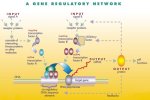Extant
Animal Phyla |
Phylum |
Fossil
Record |
Contained
Within |
Subphyla
or Classes Contained |
Estimated
Number of Described Species |
| Acanthocephala
|
? |
Kingdom
Animalia
Subkingdom Eumetazoa
Superphylum Platyzoa |
Classes: Archiacanthocephala, Eoacanthocephala, Palaeacanthocephala
|
some
750 |
| Acoelomorpha |
? |
Kingdom
Animalia
Subkingdom Eumetazoa |
Classes:
Acoela, Nemertodermatida
|
? |
| Annelida |
Cambrian
(518 mya) to Present |
Domain
Eukaryota
Kingdom Animalia
Superphylum Lophotrochozoa |
Classes:
Polychaeta, Clitellata, Myzostomida, Archiannelida |
some
17000 extant |
| Arthropoda |
Cambrian
(540 mya) to Present |
Domain
Eukaryota
Kingdom Animalia
Subkingdom Eumetazoa
Superphylum Ecdysozoa |
Trilobitomorpha,
Chelicerata,
Myriapoda,
Hexapoda,
Crustacea |
more
than 1.1 million |
| Brachiopoda |
Lower
Cambrian to Present |
Domain
Eukaryota
Kingdom Animalia |
Complex:
Two main groups are Inarticulata and Articulata |
Some
400 extant; prodigious fossil species |
| Bryozoa |
Ordovician
to Present |
Domain
Eukaryota
Kingdom Animalia
Superphylum Lophotrochozoa |
Classes:
Stenolaemata, Gymnolaemata, Phylactolaemata |
some
5000 extant |
| Chaetognatha |
Cambrian
to Prsent |
Domain
Eukaryota
Kingdom Animalia |
Classes: Archisagittoidea, Sagittoidea
|
Some
100 extant |
| Chordata |
Lower
Cambrian (530 mya) to Present |
Domain
Eukaryota
Kingdom Animalia
Subkingdom
Eumetazoa
Superphylum Deuterostomia
|
Subphyla:Tunicata,
Cephalochordata, Vertebrata |
More
than 60,000 |
| Cnidaria |
Precambrian
(580 mya) to Present |
Domain
Eukaryota
Kingdom Animalia |
Subphyla:
Anthozoa, Medusozoa |
Some
11,000 |
| Ctenophora |
Cambrian
to Prsent |
Domain
Eukaryota
Subkingdom Eumetazoa |
Classes:Tentaculata,
Nuda |
Some
100 |
| Cycliophora |
? |
Domain
Eukaryota
Kingdom Animalia
Subkingdom Eumetazoa
Superphylum Platyzoa |
Symbion
species |
3
or more |
| Echinodermata |
Cambrian
to Prsent |
Domain
Eukaryota
Subkingdom Eumetazoa
Superphylum Deuterostomia |
Subphyla:
Homalozoa, Crinozoa, Asterozoa, Pelmatozoa, Blastozoa |
some
7,000 extant species and 13,000 extinct |
| Echiura
(sometimes placed with Annelida) |
Upper
Carboniferous to Present |
Domain
Eukaryota
Kingdom Animalia
Subkingdom Metazoa
Superphylum Lophotrochozoa
|
Echiuroidea,
Heteromyota,
Xenopneusta |
130 |
| Entoprocta |
? |
Domain Eukaryota
Kingdom Animalia
Superphylum: Lophotrochozoa |
Four
families |
Some
150 |
| Gastrotricha |
? |
Domain
Eukaryota
Kingdom Animalia
Subkingdom Eumetazoa
Superphylum Platyzoa |
Orders:
Macrodasyida,
Chaetonotida |
About
690 |
| Gnathostomulida
|
? |
Domain
Eukaryota
Kingdom Animalia
Subkingdom Eumetazoa
Superphylum Platyzoa |
Orders: Filospermoidea, Bursovaginoidea
|
Some
100 |
| Hemichordata |
Cambrian
to Prsent |
Domain
Eukaryota
Kingdom Animalia
Subkingdom Eumetazoa
Superphylum Deuterostomia |
Classes: Enteropneusta, Graptolithina (extinct), Pterobranchia,
Planctosphaeroidea
|
Some
100 extant |
| Kinorhyncha |
? |
Domain
Eukaryota
Kingdom Animalia
Superphylum Ecdysozoa |
Orders:
Cyclorhagida, Homalorhagida |
Some
150 |
| Loricifera |
? |
Domain
Eukaryota
Kingdom Animalia |
Eight
described genera |
Some
120 |
| Micrognathozoa |
? |
Domain
Eukaryota
Kingdom Animalia
Subkingdom Eumetazoa |
One
Genus: Limnognathia |
At
least 1 |
| Mollusca |
Cambrian
to Prsent |
Domain
Eukaryota
Kingdom Animalia
Superphylum: Lophotrochozoa |
Classes:
Aplacophora,
Bivalvia,
Caudofoveata,
Cephalopoda,
Gastropoda,
Helcionelloida,
Monoplacophora,
Polyplacophora,
Rostroconchia,
Scaphopoda |
Some
112,000 |
| Nematoda |
? |
Domain
Eukaryota
Kingdom Animalia
Subkingdom Eumetazoa |
Classes:
Adenophorea, Secernentea
|
Perhaps
one million |
| Nematomorpha |
? |
Domain
Eukaryota
Kingdom Animalia
Superphylum Ecdysozoa |
Classes:
Nectonematoida
Gordioidea |
About
300 |
| Nemertea |
? |
Domain
Eukaryota
Kingdom Animalia
Superphylum: Lophotrochozoa |
Classes:
Anopla, Enopla |
More
than 1000 |
| Onychophora (Also
see Lobopodia) |
|
Domain
Eukaryota
Kingdom Animalia
Superphylum Ecdysozoa |
Extant
families: Peripatidae, Peripatopsidae |
Some
200 extant |
| Orthonectida |
? |
Domain
Eukaryota
Kingdom Animalia |
Some
20 species |
About
20 |
| Phoronida |
Putative
Phoronids from Cambrian |
Domain
Eukaryota
Kingdom Animalia
Superphylum Lophotrochozoa |
Extant
genera: Phoronis, Phoronopsis
Putative Phoronids occur in Maotianshan
Shales |
Some
20 |
| Placozoa |
? |
Domain
Eukaryota
Kingdom Animalia |
One
so far - putative sponge ancestor |
1 |
| Platyhelminthes |
? |
Domain
Eukaryota
Kingdom Animalia
Subkingdom Eumetazoa
Superphylum Platyzoa |
Classes:
Monogenea, Trematoda, Cestoda, Turbellaria |
Some
25,000 |
| Porifera |
Ediacara
(Precambrian) to Present |
Domain
Eukaryota
Kingdom Animalia |
Groups:
Calcarea, Hexactinellida, Demospongiae |
Some
5000 extant |
| Priapulida |
Cambrian
to Present |
Domain
Eukaryota
Kingdom Animalia |
Extinct Genera:Ancalagon, Anningvermis, Corynetis, Ottoia
Extant Classes: Priapulimorpha, Halicryptomorpha, Seticoronaria |
Some
17 |
| Rhombozoa |
|
Domain
Eukaryota
Kingdom Animalia |
|
|
| Rotifera |
Eocene
to Present |
Domain
Eukaryota
Kingdom Animalia
Subkingdom Eumetazoa
Superphylum Platyzoa |
Classes:
Monogononta, Digononta, Bdelloidea, Seisonidea |
|
| Sipuncula |
Cambrian
to Present |
Domain
Eukaryota
Kingdom Animalia
Superphylum Lophotrochozoa |
Classes:
Phascolosomatidea, Sipunculidea, Sipunculiformes |
|
| Tardigrada |
Early
Cambrian to Present |
Domain
Eukaryota
Kingdom Animalia
Subkingdom Eumetazoa
Superphylum Ecdysozoa |
Classes:
Heterotardigrada, Mesotardigrada, Eutardigrada |
|
| Xenoturbellida |
? |
Domain
Eukaryota
Subkingdom Eumetazoa
Superphylum Deuterostomia |
? |
2 |

